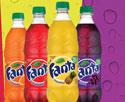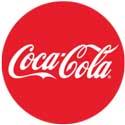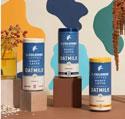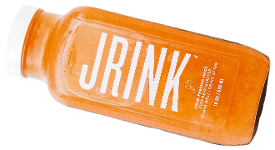Coca-Cola
New Social Media-Based Promotional Campaign Targets Fanta-Loving Teenagers
 Coca-Cola has launched a promotional campaign to emphasize a refocusing of its iconic Fanta fruit-flavored soda toward younger consumers. Purportedly driven by the enthusiasm of “a hyper-connected legion of fans” on social media, the “It’s A Thing” effort targets teenagers using digital video content, augmented reality (AR)-powered outdoor ads, creative social extensions, and brand partnerships with youth-focused media platforms. According to the company, today’s “young and fiercely-independent” Fanta fans “express themselves uniquely through their micro-passions.” The campaign focuses on four Fanta popular flavors – orange, pineapple, strawberry and grape – in out-of-home ads in Atlanta, Los Angeles, Miami, New York City, and Washington, D.C. Besides traditional ads, Fanta has partnered with Snapchat for “deeper engagement, customization and sharing” using Snap AR Marker Tech technology and scannable Snapchat codes that unlock four filters and AR sticker packs.[Image Credit: © The Coca-Cola Company]
Coca-Cola has launched a promotional campaign to emphasize a refocusing of its iconic Fanta fruit-flavored soda toward younger consumers. Purportedly driven by the enthusiasm of “a hyper-connected legion of fans” on social media, the “It’s A Thing” effort targets teenagers using digital video content, augmented reality (AR)-powered outdoor ads, creative social extensions, and brand partnerships with youth-focused media platforms. According to the company, today’s “young and fiercely-independent” Fanta fans “express themselves uniquely through their micro-passions.” The campaign focuses on four Fanta popular flavors – orange, pineapple, strawberry and grape – in out-of-home ads in Atlanta, Los Angeles, Miami, New York City, and Washington, D.C. Besides traditional ads, Fanta has partnered with Snapchat for “deeper engagement, customization and sharing” using Snap AR Marker Tech technology and scannable Snapchat codes that unlock four filters and AR sticker packs.[Image Credit: © The Coca-Cola Company]
Coca-Cola Japan Launches Apple-Flavored Coke

Coca-Cola Japan is introducing an apple-flavored version of Coke for the autumn season beginning September 16. Coca-Cola Apple contains 46 calories per 10 cl and will be available in 50 cl PET bottles at $1.30 apiece. Aggressively innovative Coca-Cola Japan launches about 100 new products a year, including an alcoholic drink last year and a fiber-based Coke that claims to be able to block fat.[Image Credit: © COCA-COLA BOTTLERS JAPAN INC]
Coca-Cola Southern Africa To Invest $1B On New Products, Expansion Of Capacity

South Africa-based Coca-Cola Southern and East Africa will invest $1 billion in its operations over the next five years because it still sees great potential in the region. Southern and East Africa is already one of the group’s top 10 markets in the world in terms of volume and profit. Regional President Bruno Pietracci said the money would be spent on new products, expansion of capacity, new trucks, innovations, and on support of the group’s brands. “Coca-Cola believes Africa will be a very important growth engine for the group in the next five to ten years,” Pietracci said, both for the sparkling and clear drink markets.[Image Credit: © THE COCA-COLA COMPANY]
Following Divestment Of SPC, Coca-Cola Amatil Strengthens Organizational Structure
 On the heels of the divestment of its non-beverage food processing unit SPC in June, Coca-Cola Amatil (NSW, Australia) said it is making organizational changes to deliver synergies among its non-alcohol, alcohol, and coffee businesses. The company wants its beverage categories to be managed in line with geographic responsibilities. The Australia-based alcohol and coffee portfolios will join the Australian Beverages team; alcohol and coffee in New Zealand, Paradise Beverages in Fiji and Samoa, and the international alcohol sales team will join the New Zealand and Fiji businesses. The coffee portfolio in Indonesia will become part of the Indonesian business.[Image Credit: © Coca-Cola Amatil Limited]
On the heels of the divestment of its non-beverage food processing unit SPC in June, Coca-Cola Amatil (NSW, Australia) said it is making organizational changes to deliver synergies among its non-alcohol, alcohol, and coffee businesses. The company wants its beverage categories to be managed in line with geographic responsibilities. The Australia-based alcohol and coffee portfolios will join the Australian Beverages team; alcohol and coffee in New Zealand, Paradise Beverages in Fiji and Samoa, and the international alcohol sales team will join the New Zealand and Fiji businesses. The coffee portfolio in Indonesia will become part of the Indonesian business.[Image Credit: © Coca-Cola Amatil Limited]
Coca-Cola Adds Augmented Reality To Its Marketing Tool Bag
 Thanks to a collaboration between PR firm Ogilvy Mexico and California’s visual effects (VFX) specialist Timber, Coca-Cola now has an interactive augmented reality (AR) experience in its marketing arsenal. The two companies created the 3D elements needed for an interactive AR experience in which users can point their phone’s camera at a can of Coke and witness one of 12 stories come to life. The stories each revolve around a minor conflict, where animated characters engage in a lighthearted exchange. The conflict is resolved positively when the characters share a Coke. According to Timber’s creative directors, the Coca-Cola application worked perfectly. ““People working together in harmony was always the core foundation of the idea… The nature of AR allowed the viewer to bring the stories into their environment using the practical can of Coke as a prop.”[Image Credit: © The Coca-Cola Company]
Thanks to a collaboration between PR firm Ogilvy Mexico and California’s visual effects (VFX) specialist Timber, Coca-Cola now has an interactive augmented reality (AR) experience in its marketing arsenal. The two companies created the 3D elements needed for an interactive AR experience in which users can point their phone’s camera at a can of Coke and witness one of 12 stories come to life. The stories each revolve around a minor conflict, where animated characters engage in a lighthearted exchange. The conflict is resolved positively when the characters share a Coke. According to Timber’s creative directors, the Coca-Cola application worked perfectly. ““People working together in harmony was always the core foundation of the idea… The nature of AR allowed the viewer to bring the stories into their environment using the practical can of Coke as a prop.”[Image Credit: © The Coca-Cola Company]
Monster
Bang Says It Beats Monster Energy Again In Dutch Court
 According to Florida-based beverage company Bang Energy, a Netherlands district court has found that rival Monster Energy acted unlawfully toward Bang by “disseminating public communications, including letters to Bang Energy’s customers, containing false allegations about Bang Energy and its products.” Contrary to what Monster had alleged, the court ruled that Bang energy drinks are freely available in the EU and that Monster had wrongfully suggested that in prior litigation between Monster and Bang an injunction would have been granted against the marketing of Bang energy drinks, But, Bang noted, the prior court said no such thing and instead denied the majority of Monster’s claims, finding Monster to be the losing party. Monster was ordered to tell Bang who received Monster’s letters, “so that Bang can rectify Monster’s false and misleading statements.”[Image Credit: © Monster Energy Company]
According to Florida-based beverage company Bang Energy, a Netherlands district court has found that rival Monster Energy acted unlawfully toward Bang by “disseminating public communications, including letters to Bang Energy’s customers, containing false allegations about Bang Energy and its products.” Contrary to what Monster had alleged, the court ruled that Bang energy drinks are freely available in the EU and that Monster had wrongfully suggested that in prior litigation between Monster and Bang an injunction would have been granted against the marketing of Bang energy drinks, But, Bang noted, the prior court said no such thing and instead denied the majority of Monster’s claims, finding Monster to be the losing party. Monster was ordered to tell Bang who received Monster’s letters, “so that Bang can rectify Monster’s false and misleading statements.”[Image Credit: © Monster Energy Company]
Other Companies
Diversity In Energy Beverages Spreads To Traditional Energy Brands
 In 2017, energy drinks competing for a share of a limited audience entered a slack period, experiencing only a 2.1 percent increase in dollar sales and a 1.8 percent hike in unit sales. To regain momentum, companies began emphasizing more diversely-formulated beverages with new flavors, fewer calories, lower carbs and ingredients. The resulting “performance energy” beverages appealed to a more diverse group of consumers, and energy drink sales were back on track. From 2017 to 2018, retail sales of energy drinks grew 8.4 percent and volume increased 8.6 percent. The trend continues as companies develop “disruptive” energy drinks that appeal to fitness and vitamin channel shoppers, but are also appearing in pharmacy chains like CVS and Rite-Aid, grocery stores, and convenience stores. Meanwhile, the success of sports and energy drink “disrupters” is prompting traditional energy brand companies – e.g., Monster Beverage and Red Bull – to diversify.[Image Credit: © Herbich from Pixabay]
In 2017, energy drinks competing for a share of a limited audience entered a slack period, experiencing only a 2.1 percent increase in dollar sales and a 1.8 percent hike in unit sales. To regain momentum, companies began emphasizing more diversely-formulated beverages with new flavors, fewer calories, lower carbs and ingredients. The resulting “performance energy” beverages appealed to a more diverse group of consumers, and energy drink sales were back on track. From 2017 to 2018, retail sales of energy drinks grew 8.4 percent and volume increased 8.6 percent. The trend continues as companies develop “disruptive” energy drinks that appeal to fitness and vitamin channel shoppers, but are also appearing in pharmacy chains like CVS and Rite-Aid, grocery stores, and convenience stores. Meanwhile, the success of sports and energy drink “disrupters” is prompting traditional energy brand companies – e.g., Monster Beverage and Red Bull – to diversify.[Image Credit: © Herbich from Pixabay]
La Colombe Introduces Canned Oat Milk Lattes

Philadelphia-based third-wave coffee company La Colombe is expanding its lineup with a trendy ingredient – oat milk – that’s been steadily making its way into coffee shops. The company recently announced the debut of a canned version of its oat milk draft lattes introduced on the on-tap menu a year ago. The nine-ounce $3.49 canned lattes come in original, vanilla, and caramel flavors. Samplers at Food and Wine say the original canned latte is “a staff favorite, lightly sweet and creamy with hints of earthiness from the coffee.” The products launched on September 5 at the company’s cafés, as well as on its website, on Amazon, and at Wegmans and Harris Teeter.[Image Credit: © La Colombe Torrefaction, INC.]
Asia’s Gen Z Consumers Want Health Benefits, Exotic Flavors
 Health-conscious Generation Z consumers in the Asia-Pacific region not only want natural health benefits from their beverages, they are also looking for new and “exotic” flavors and are willing to experiment. Research firm GlobalData says Asian-inspired infused beverages containing matcha, ginseng and guarana are “at the forefront of consumers' product purchase decision-making.” Brands hoping to tap into Asia's rapidly-developing markets are using combinations of "unique flavors and healthy ingredients" to sell soft drinks. An example is Suntory Beverage & Food's experiment with its Goodmood brand, a “water plus” drink with yogurt. The company is rolling it out across Asia, with well-received launches in Indonesia, Thailand, and Vietnam. Coca-Cola, meanwhile, has launched its Authentic Tea House range in six Asian markets, with more planned next year. The RTD teas contain no sugar, additives or preservatives; variants include Ayataka Japanese Green Tea, Da Hong Pao Oolong Tea. and Chrysanthemum Tea.[Image Credit: © SUNTORY PEPSICO BEVERAGE (THAILAND) CO., LTD.]
Health-conscious Generation Z consumers in the Asia-Pacific region not only want natural health benefits from their beverages, they are also looking for new and “exotic” flavors and are willing to experiment. Research firm GlobalData says Asian-inspired infused beverages containing matcha, ginseng and guarana are “at the forefront of consumers' product purchase decision-making.” Brands hoping to tap into Asia's rapidly-developing markets are using combinations of "unique flavors and healthy ingredients" to sell soft drinks. An example is Suntory Beverage & Food's experiment with its Goodmood brand, a “water plus” drink with yogurt. The company is rolling it out across Asia, with well-received launches in Indonesia, Thailand, and Vietnam. Coca-Cola, meanwhile, has launched its Authentic Tea House range in six Asian markets, with more planned next year. The RTD teas contain no sugar, additives or preservatives; variants include Ayataka Japanese Green Tea, Da Hong Pao Oolong Tea. and Chrysanthemum Tea.[Image Credit: © SUNTORY PEPSICO BEVERAGE (THAILAND) CO., LTD.]
Edelman Report Discusses Major Global Food, Beverage Trends
 Global PR firm Edelman’s new food and beverage industry report highlights this year’s major trends. Demand for customization or foods and beverages, for example, has steadily increased over the past decade, but companies will need to protect consumer data used to develop personalized products. Companies are turning to “superpowders” to deliver health benefits. The powders are made from functional ingredients like ancient herbs, roots, and plants that contain collagen, adaptogens, ashwagandha, and turmeric. Companies are also developing FODMAP-friendly products that do not trigger uncomfortable digestive symptoms in susceptible people, especially those with irritable bowel syndrome (IBS). Other key trends include: a rise in global tea consumption and the emergence of new tea flavors; the advent of a “sixth taste concept” (beyond sweet, salty, bitter, sour, and umami) called kokumi; and consumer demand for curtailed use of plastic, and increased attention to water usage and upcycling of food waste. [Image Credit: © Marijana from Pixabay]
Global PR firm Edelman’s new food and beverage industry report highlights this year’s major trends. Demand for customization or foods and beverages, for example, has steadily increased over the past decade, but companies will need to protect consumer data used to develop personalized products. Companies are turning to “superpowders” to deliver health benefits. The powders are made from functional ingredients like ancient herbs, roots, and plants that contain collagen, adaptogens, ashwagandha, and turmeric. Companies are also developing FODMAP-friendly products that do not trigger uncomfortable digestive symptoms in susceptible people, especially those with irritable bowel syndrome (IBS). Other key trends include: a rise in global tea consumption and the emergence of new tea flavors; the advent of a “sixth taste concept” (beyond sweet, salty, bitter, sour, and umami) called kokumi; and consumer demand for curtailed use of plastic, and increased attention to water usage and upcycling of food waste. [Image Credit: © Marijana from Pixabay]
Study Of The Impact Of Sugary And Diet Sodas Just Raises More Questions
 A long-term study of 450,000 Europeans, including those who drank soft drinks regularly, found that people who imbibed two or more glasses of sugar-sweetened beverages a day were eight percent more likely to die young compared to those who consumed less than one glass a month. Published in the journal JAMA Internal Medicine, the study raised eyebrows when it also reported that drinking Diet Coke could be even more deadly than drinking Coca-Cola Classic. The problem with the research, however, according to experts, is that it and other observational studies do not resolve a key question: does consuming drinks sweetened with aspartame or saccharin harm your health? Or do people who drink lots of Diet Snapple or Sprite Zero just generally tend to lead less healthy lifestyles anyway? The question may never be resolved. Scientists say the alternative to observational studies – i.e., clinical trials that randomly assign participants to a sugary drinks group or a diet soda group – just aren’t feasible.[Image Credit: © skeeze from Pixabay]
A long-term study of 450,000 Europeans, including those who drank soft drinks regularly, found that people who imbibed two or more glasses of sugar-sweetened beverages a day were eight percent more likely to die young compared to those who consumed less than one glass a month. Published in the journal JAMA Internal Medicine, the study raised eyebrows when it also reported that drinking Diet Coke could be even more deadly than drinking Coca-Cola Classic. The problem with the research, however, according to experts, is that it and other observational studies do not resolve a key question: does consuming drinks sweetened with aspartame or saccharin harm your health? Or do people who drink lots of Diet Snapple or Sprite Zero just generally tend to lead less healthy lifestyles anyway? The question may never be resolved. Scientists say the alternative to observational studies – i.e., clinical trials that randomly assign participants to a sugary drinks group or a diet soda group – just aren’t feasible.[Image Credit: © skeeze from Pixabay]
National Beverage Misses Analysts’ 2nd Quarter Profit Forecasts
 National Beverage Corp., which makes the market-dominating sparkling water line LaCroix, missed analysts’ second quarter earnings expectations by more than $9 million. Year-over-year revenue dropped 9.9 percent to $263 million, marking the fourth consecutive quarter in which it fell short of analyst expectations. The company posted a $96 million gross profit in the quarter, down from $115 million last year, though earnings per share were $0.74, an improvement from the first quarter results of $0.56 a share. LaCroix dollar sales have declined 3.9 percent year-over-year and unit sales have dropped 6.6 percent. Dollar sales of PepsiCo’s Bubly brand, meanwhile, grew 172.1 percent in the same period while unit sales improved 164.9 percent. National Beverage said in a press release that it plans to increase international distribution in Canada, the U.K., Ireland, and European countries, noting that “international customers are piggyback targets providing growth.”[Image Credit: © LaCroix Beverages, Inc.]
National Beverage Corp., which makes the market-dominating sparkling water line LaCroix, missed analysts’ second quarter earnings expectations by more than $9 million. Year-over-year revenue dropped 9.9 percent to $263 million, marking the fourth consecutive quarter in which it fell short of analyst expectations. The company posted a $96 million gross profit in the quarter, down from $115 million last year, though earnings per share were $0.74, an improvement from the first quarter results of $0.56 a share. LaCroix dollar sales have declined 3.9 percent year-over-year and unit sales have dropped 6.6 percent. Dollar sales of PepsiCo’s Bubly brand, meanwhile, grew 172.1 percent in the same period while unit sales improved 164.9 percent. National Beverage said in a press release that it plans to increase international distribution in Canada, the U.K., Ireland, and European countries, noting that “international customers are piggyback targets providing growth.”[Image Credit: © LaCroix Beverages, Inc.]
Alkaline Water Company Buys Celebrity-Backed AQUAhydrate
Kagome Plans Eightfold Expansion Of Vegetable Juice Shipments In Asia In 2020
 Japanese food and beverage maker Kagome (Tokyo) is planning to boost shipments of its vegetable juice products to Asia by a factor of eight. Last year, Kagome entered a joint venture with Nissin Foods Holdings to sell tomato and other vegetable juices in Hong Kong and Macao. Kagome owns 30 percent of this venture, while Nissin's Hong Kong unit owns the other 70 percent. The company is targeting the region's increasingly rich and health-conscious consumers, possibly including Singapore and Mongolia. Kagome wants to ship about $46.7 million of these beverages a year by the mid-2020s, up from the current $5.7 million.[Image Credit: © Kagome Co., Ltd]
Japanese food and beverage maker Kagome (Tokyo) is planning to boost shipments of its vegetable juice products to Asia by a factor of eight. Last year, Kagome entered a joint venture with Nissin Foods Holdings to sell tomato and other vegetable juices in Hong Kong and Macao. Kagome owns 30 percent of this venture, while Nissin's Hong Kong unit owns the other 70 percent. The company is targeting the region's increasingly rich and health-conscious consumers, possibly including Singapore and Mongolia. Kagome wants to ship about $46.7 million of these beverages a year by the mid-2020s, up from the current $5.7 million.[Image Credit: © Kagome Co., Ltd]
Copyright 2025 Business360, Inc.

